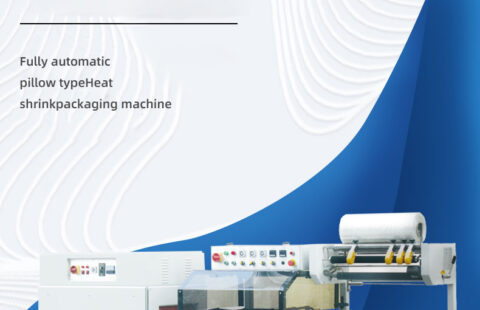
Analysis of up and down film walking technology for pillow packaging machine: comparison of structural differences and application scenarios
Pillow packaging machines, as essential equipment in modern automated packaging, rely heavily on film feeding mechanisms that directly impact operational efficiency and packaging quality. Top-feed and bottom-feed film systems, the two mainstream technologies, are widely used in food, pharmaceutical, and consumer goods industries. This article provides a systematic comparison of their mechanical structures, working principles, and practical applications to guide equipment selection.
I. Differences in Mechanical Structure and Film Path
The top-feed system employs a cantilevered film rack design, where the film roll travels vertically through overhead guide rollers to form a downward path. The film descends through a tension control system into the forming collar, with a path length approximately 1.5 times the machine’s height. This vertical configuration allows natural film elongation, effectively relieving internal stress. A representative example is SIG Group’s TC-series packaging machine, which uses eight stainless steel guide rollers to ensure smooth material transport.
The bottom-feed system utilizes a floor-mounted film stand, guiding the film upward via an L-shaped guide assembly into the forming zone. For instance, Hitachi’s HM-280 model features a 35-degree inclined film path driven by a servo-controlled bottom wheel, shortening the film path by 40%. This design is ideal for height-restricted production environments.
Structural differences in roller configurations are notable:
- Top-feed systems use bidirectional tension-adjusting rollers to compensate for elastic deformation in real time.
- Bottom-feed systems rely on single-side pressure sensors with closed-loop control for constant tension.
Data from Bosch Packaging Technology shows tension fluctuations of ±0.5N for top-feed systems, compared to ±1.2N for bottom-feed systems.
II. Forming Quality and Packaging Performance
In the forming stage, top-feed systems leverage gravity to achieve natural wrapping at the V-shaped former. Tests by Krones AG demonstrate that for chocolate packaging, top-feed systems achieve a side-seal flatness tolerance of 0.02mm and consistent heat-seal strength of 18N/15mm. The vertical path minimizes lateral stretching, making it ideal for aluminum-plastic composite films.
Bottom-feed systems employ curved guide plates and pneumatic assists for horizontal-to-vertical film conversion. Toyo Seikan’s TOSMA series, using this method, limits PET film lateral stretching to 3%—1.2% lower than top-feed systems. This enhances fragile snack packaging, achieving a 99.7% product integrity rate.
For sealing quality:
- Top-feed systems maintain steady pressure on longitudinal seals due to natural film droop, with heat-seal temperature variations within ±2°C and bubble occurrence below 0.5%.
- Bottom-feed systems require dynamic pressure compensation to address stress concentration during upward travel, excelling in irregularly shaped product packaging.
III. Equipment Selection and Maintenance Considerations
Space requirements:
- Top-feed machines (2.8–3.2m height) often need lifts for film roll replacement.
- Bottom-feed systems (≤2.2m height) use sliding film carriers, reducing roll change time to 3 minutes.
IMA Group maintenance data shows top-feed guide roller bearings last 6,000 hours, while bottom-feed components extend to 8,000 hours due to shorter paths.
Energy consumption:
- Top-feed motors consume 15–20% more power for film elevation.
- Tetra Laval’s tests reveal bottom-feed systems save 0.8kWh/hour at equivalent output. However, top-feed systems offer superior stability at high speeds (≥400 packs/minute), with speed variation under ±1%.
Maintenance costs:
- Top-feed systems require annual vertical guide calibration (≈$1,200/year).
- Bottom-feed systems need quarterly polishing of curved formers (≈$800/year).
PMMI Association studies indicate bottom-feed machines achieve 4.3% higher Overall Equipment Effectiveness (OEE).
Top-feed and bottom-feed technologies each excel in specific scenarios. Top-feed systems deliver precision for high-value, deformable products, while bottom-feed solutions prioritize space efficiency and cost-effectiveness. Emerging hybrid systems combining both advantages are reshaping the industry. For optimal selection, conduct 72-hour trials evaluating packaging yield, film waste, and energy efficiency. As servo-drive technology advances, integrated systems will likely dominate future upgrades.




